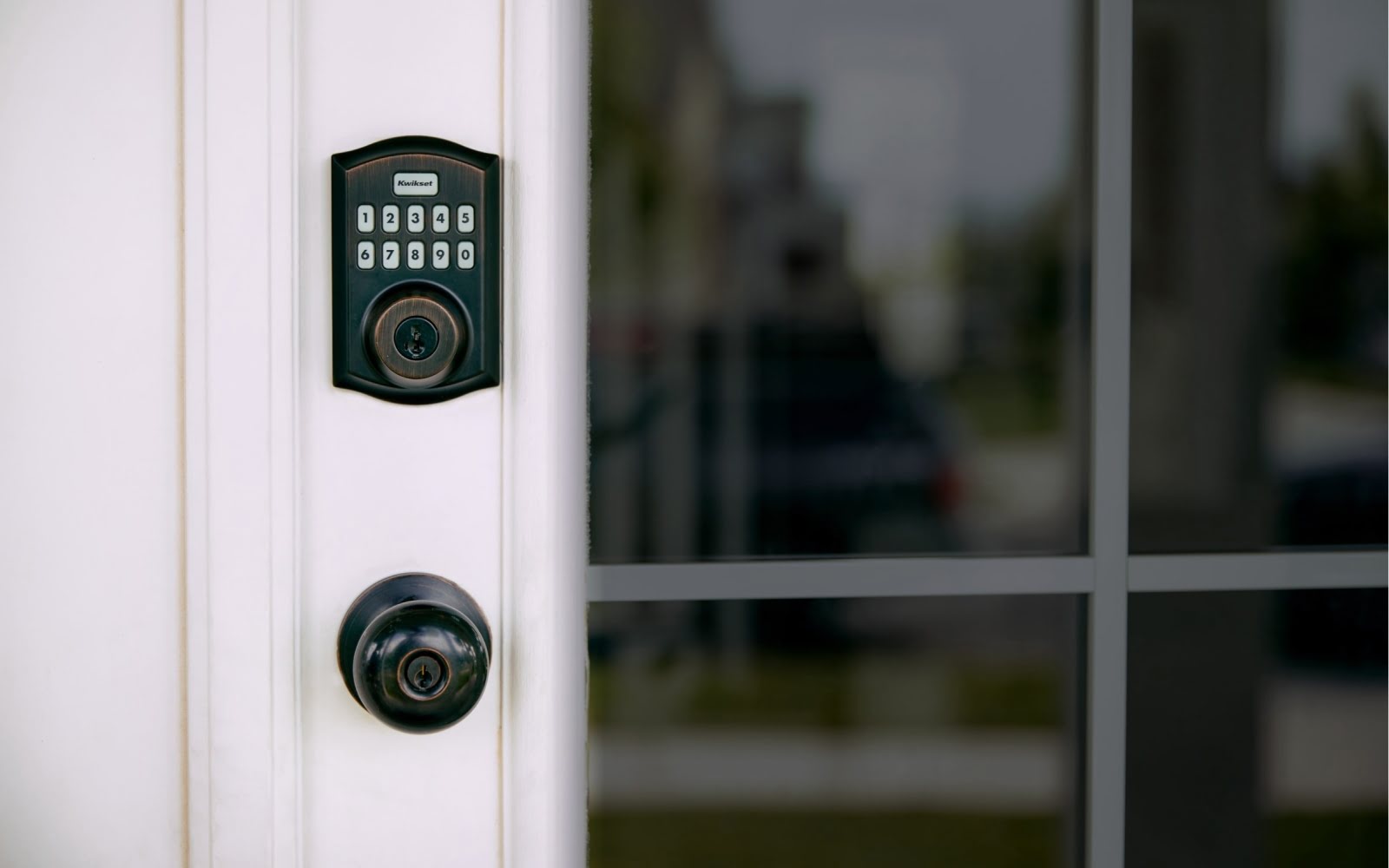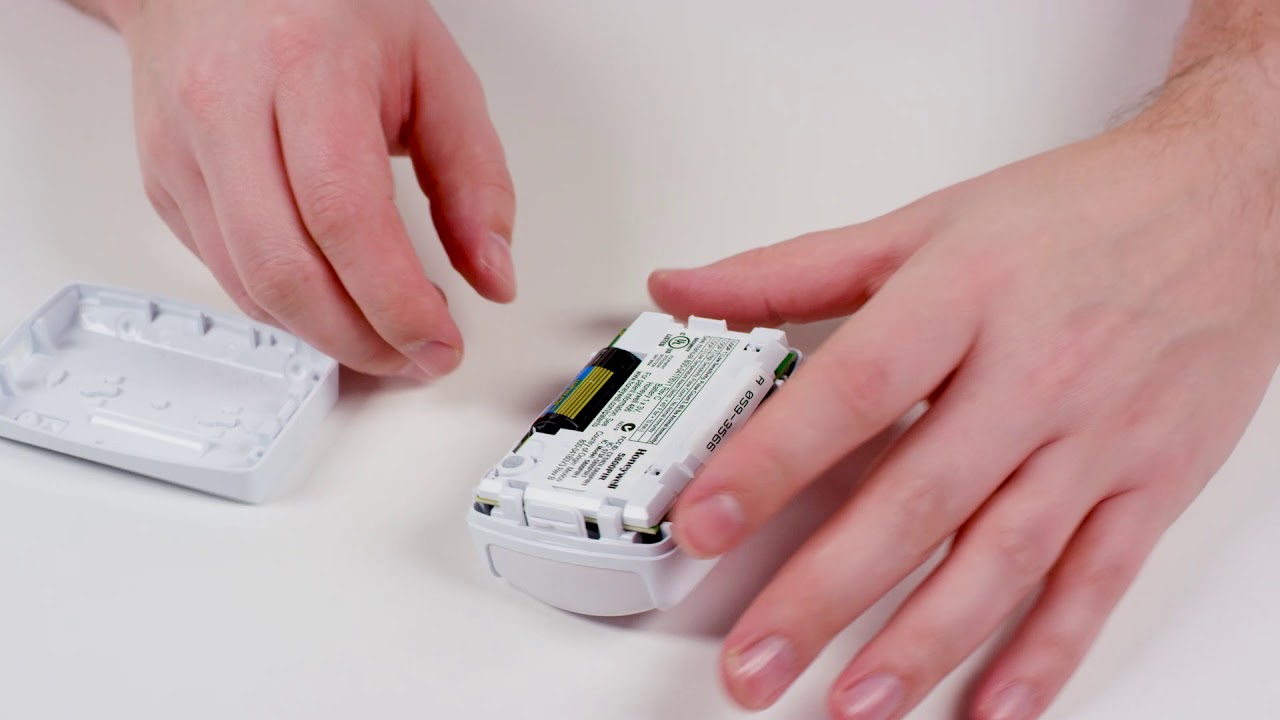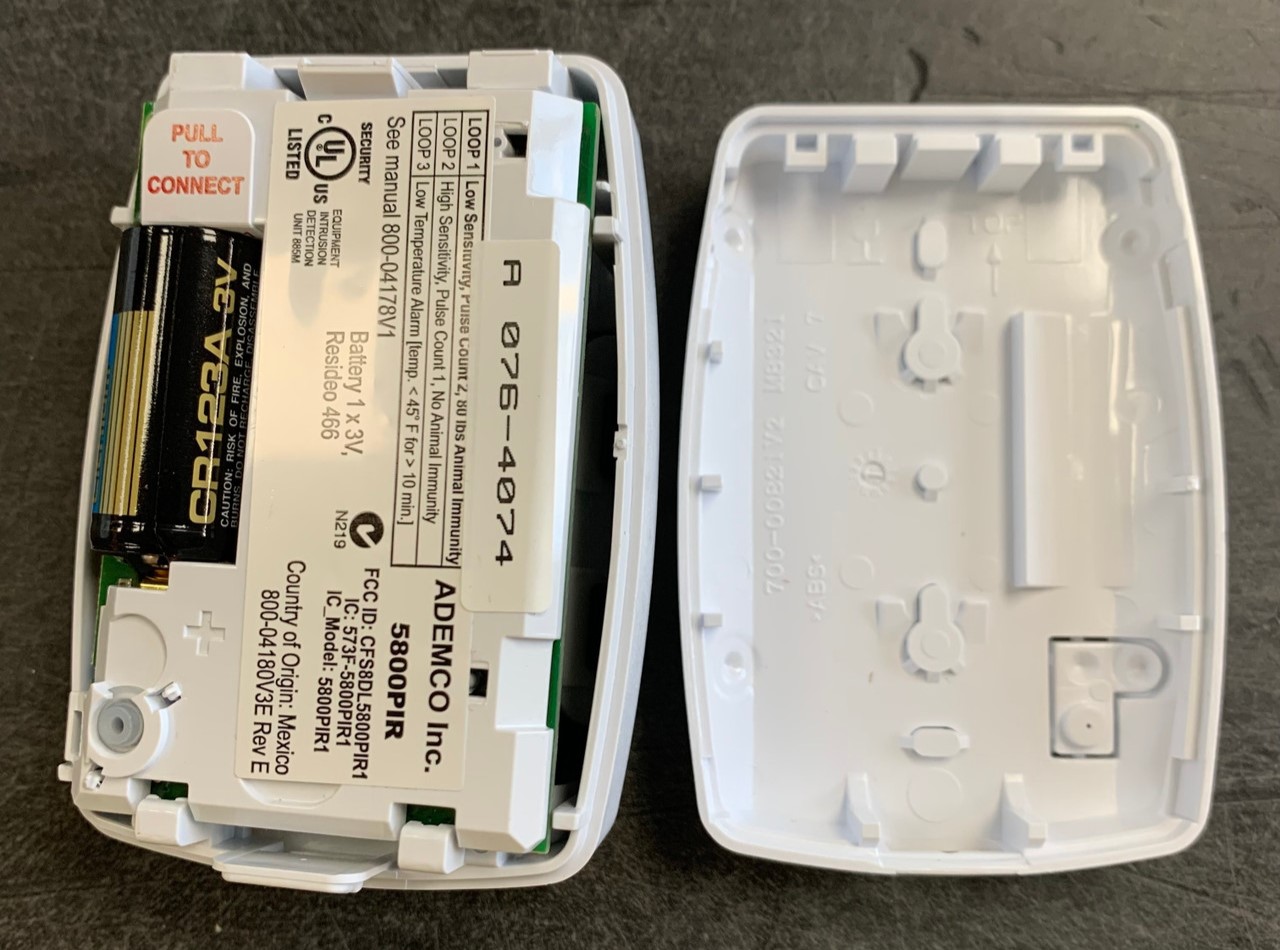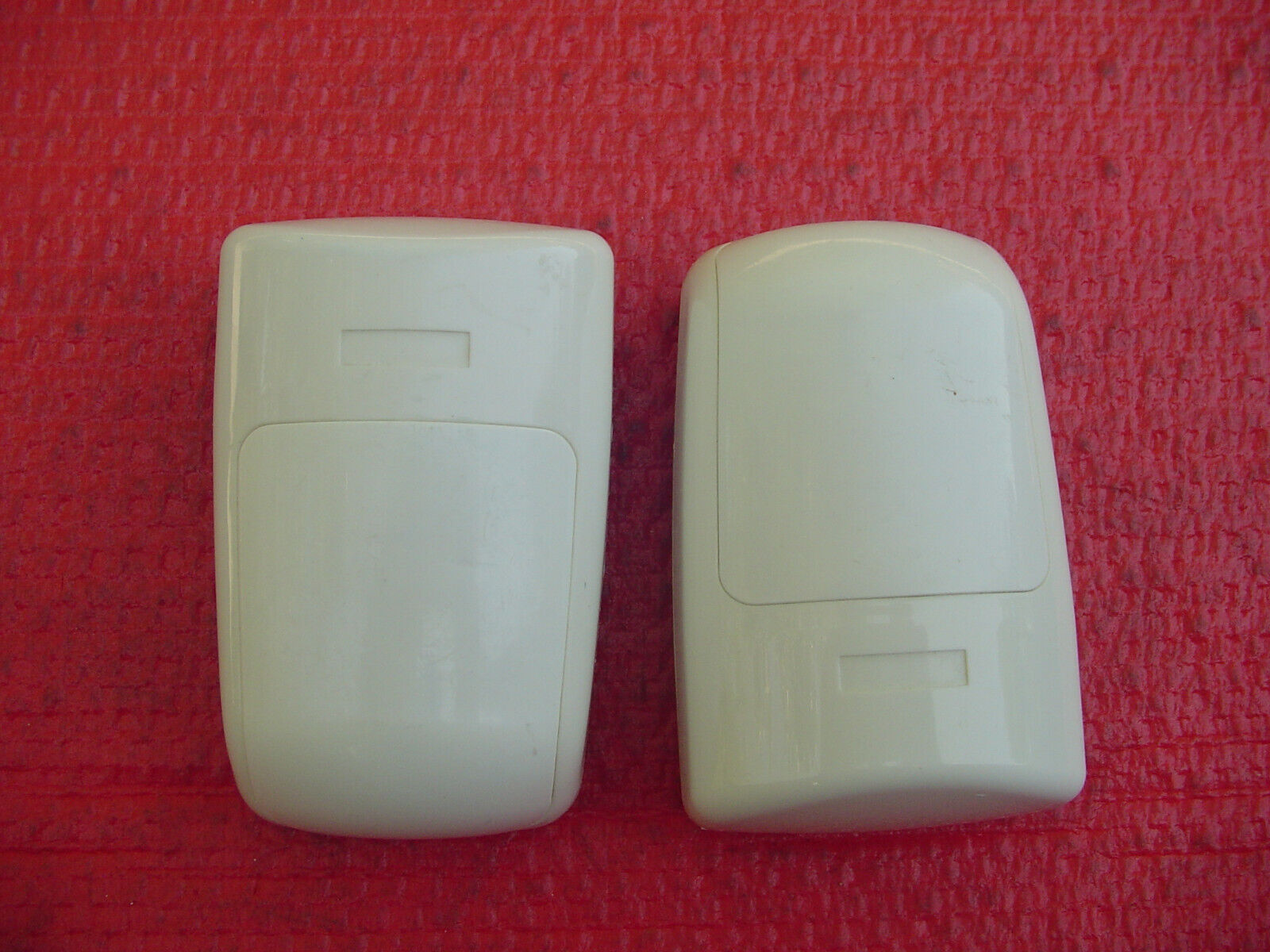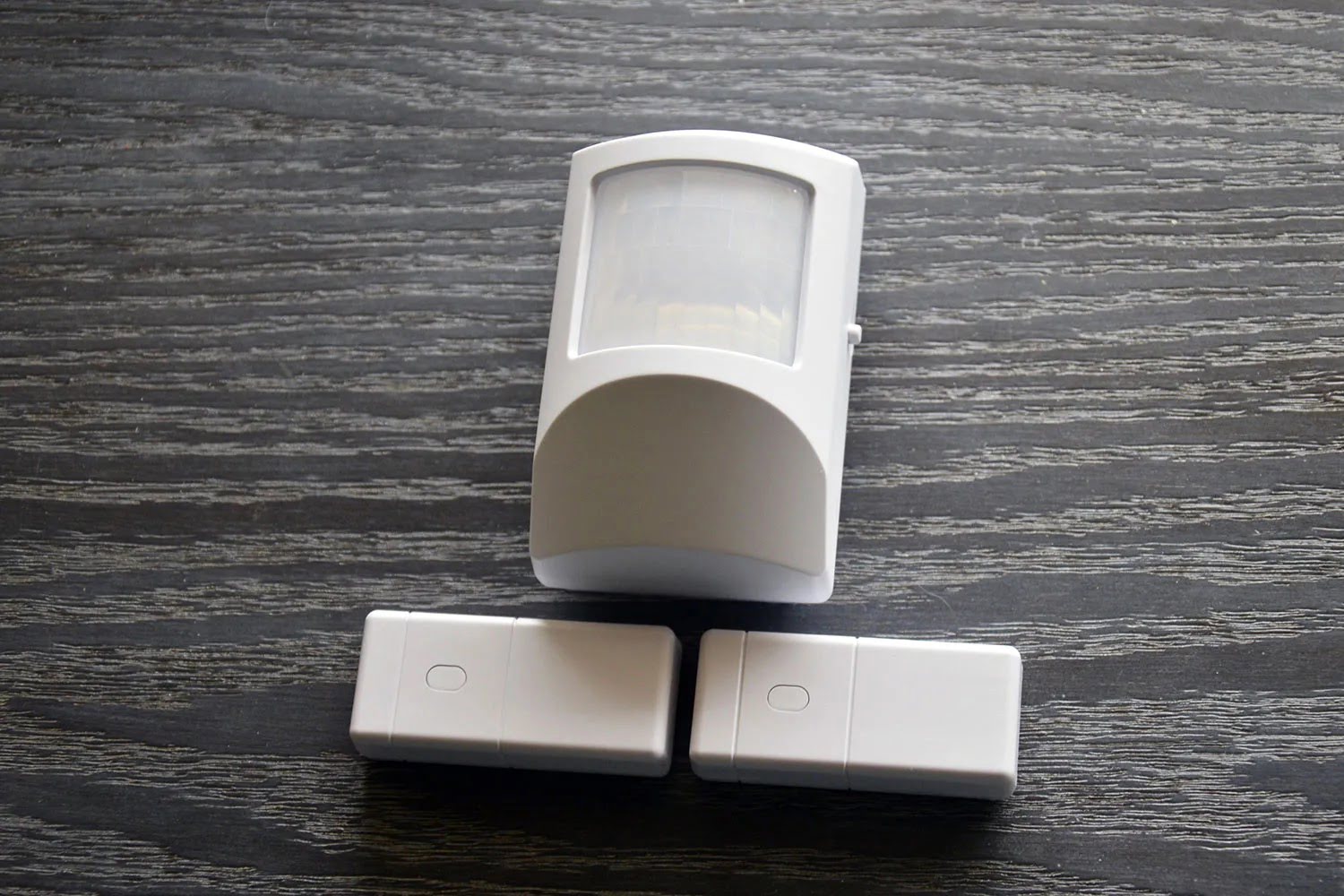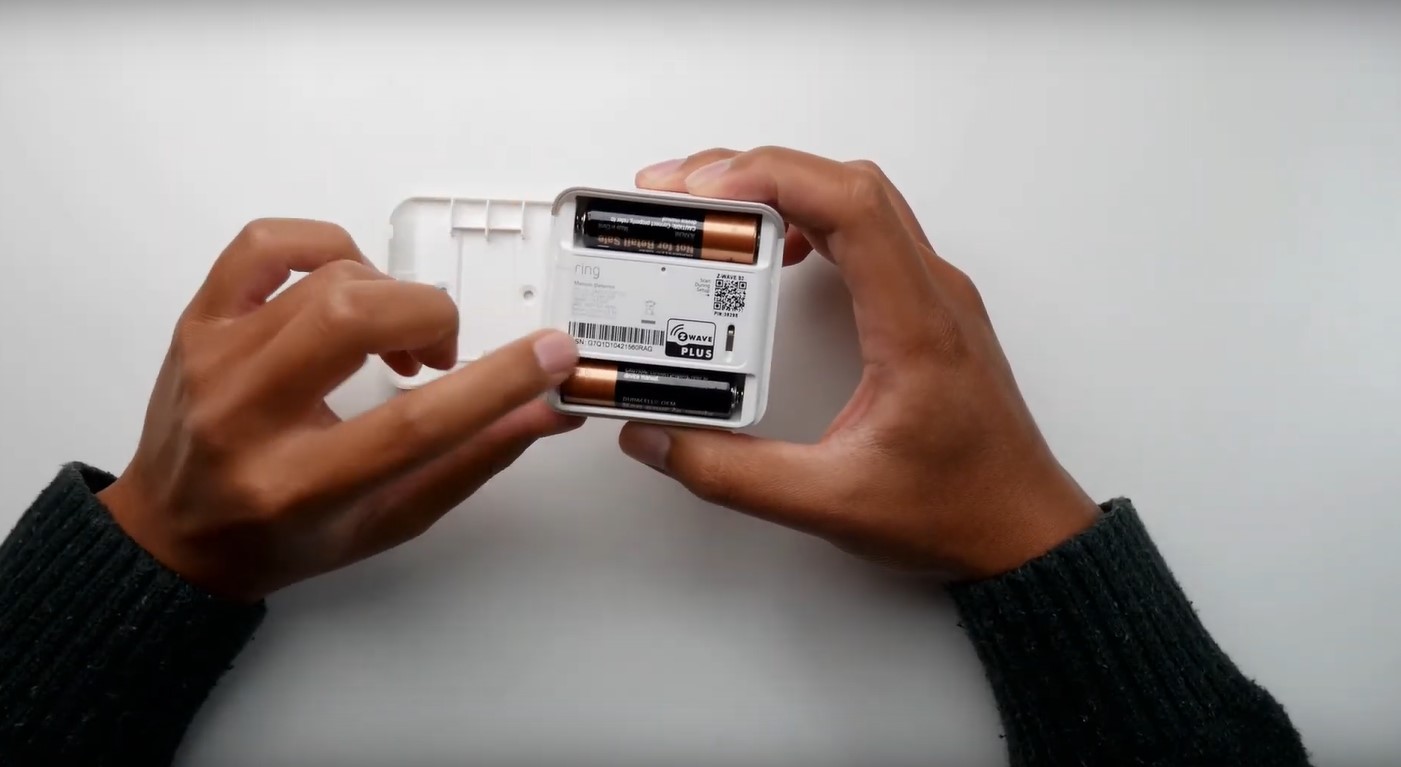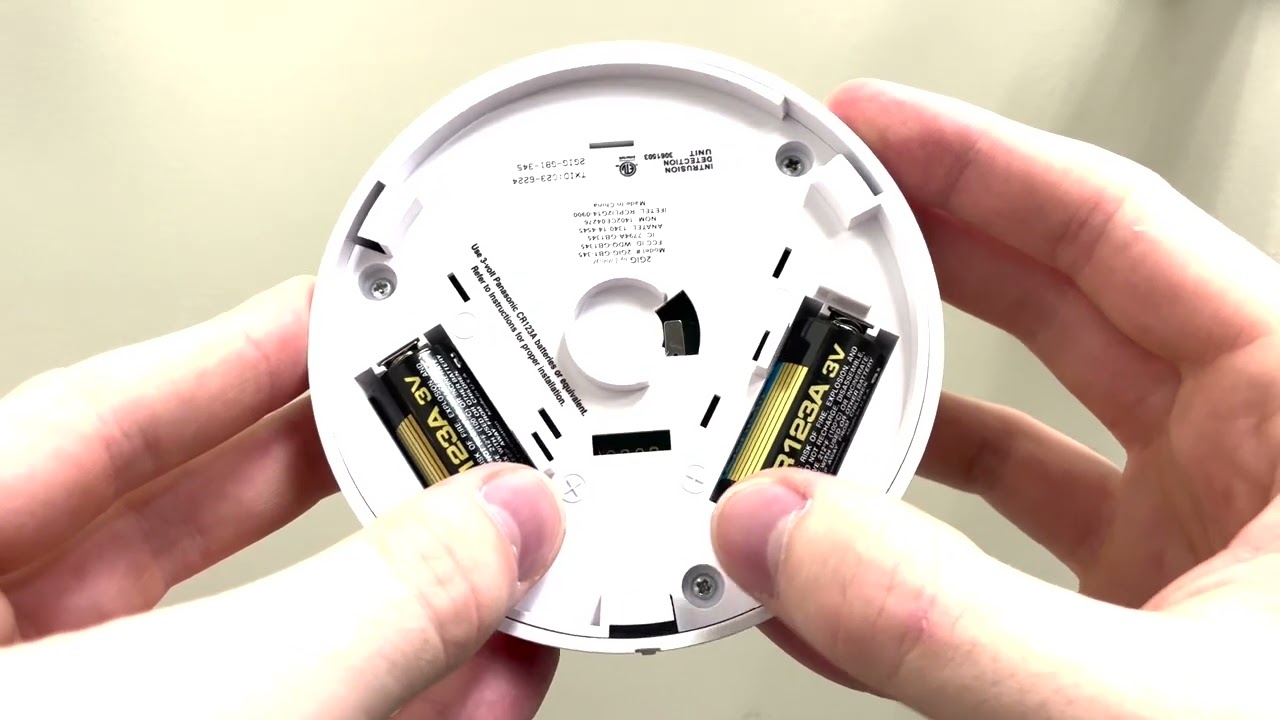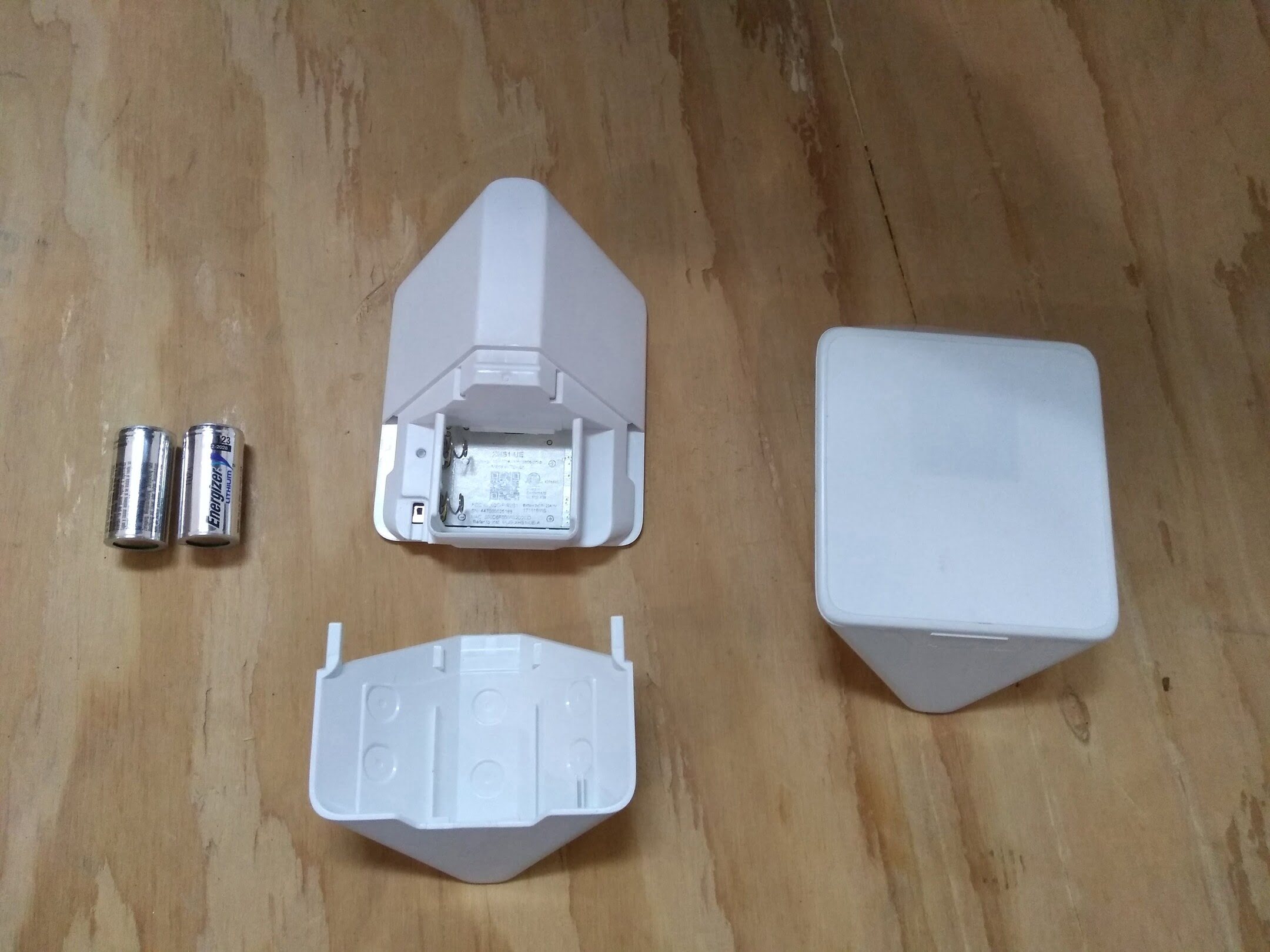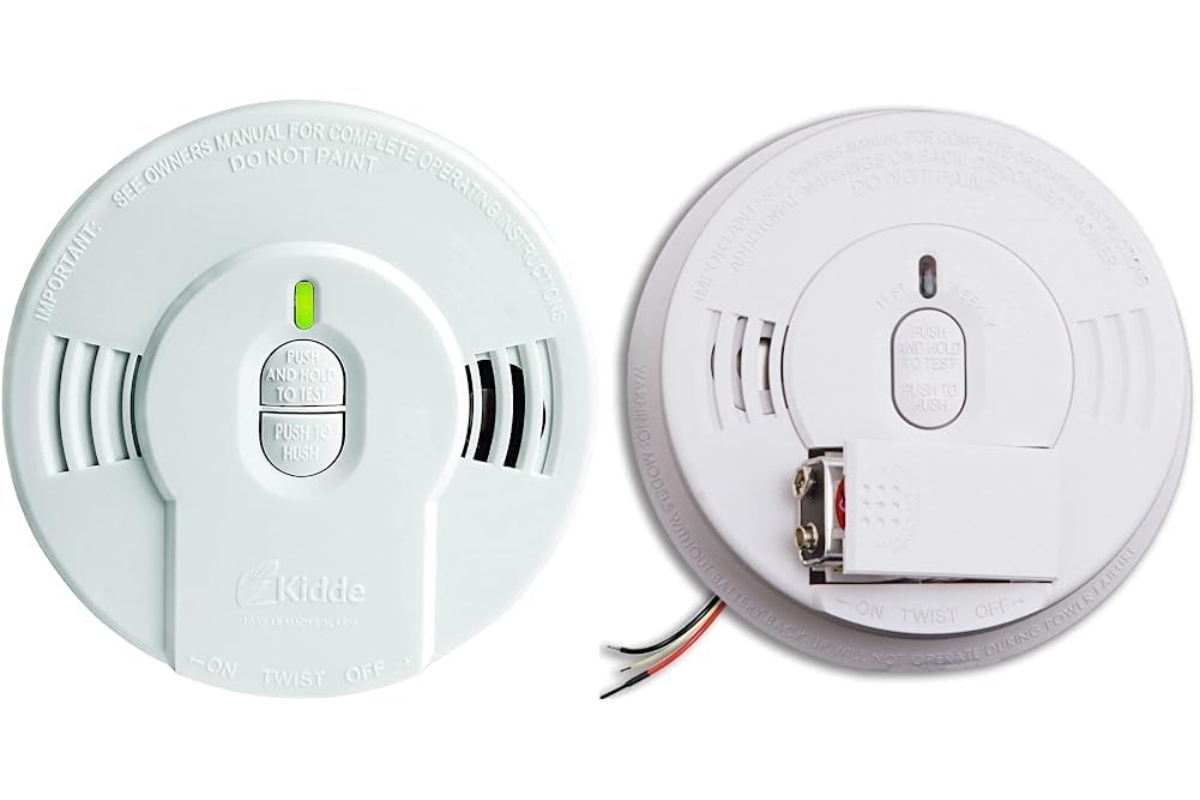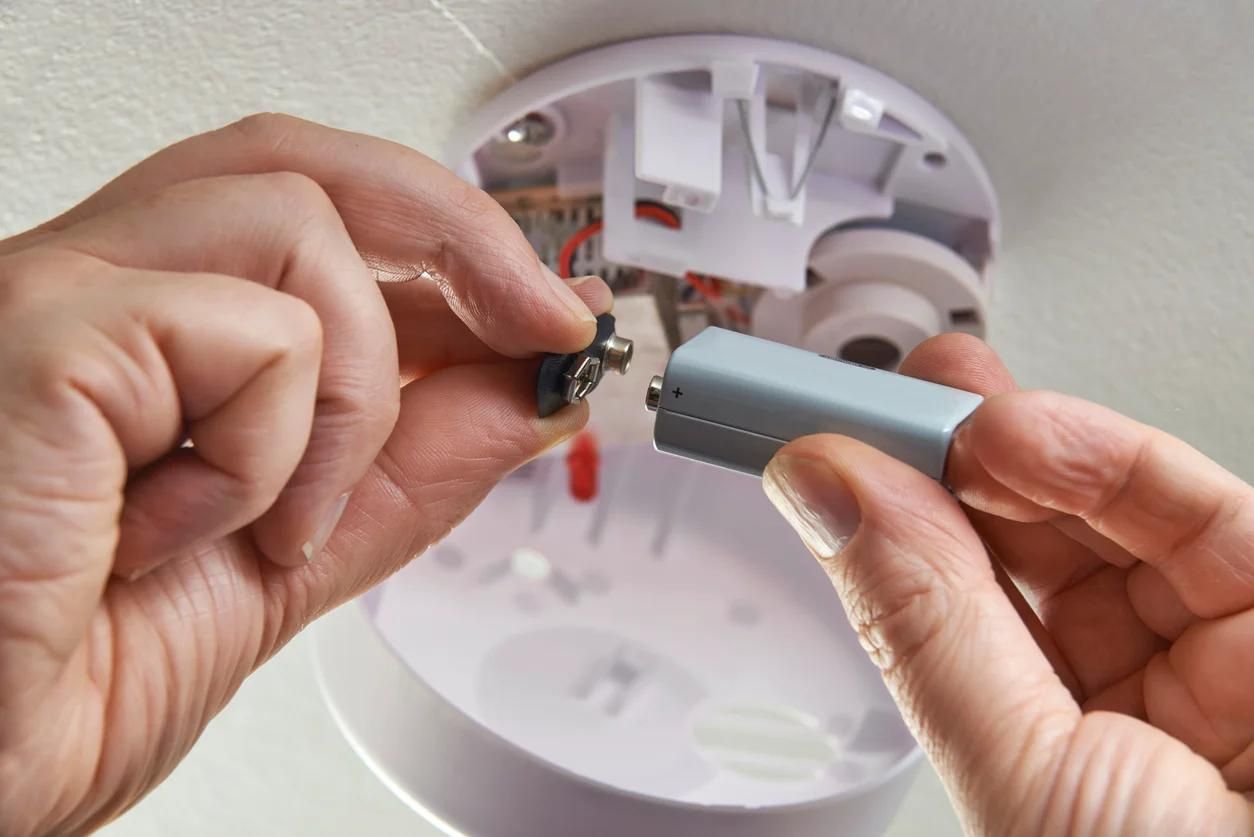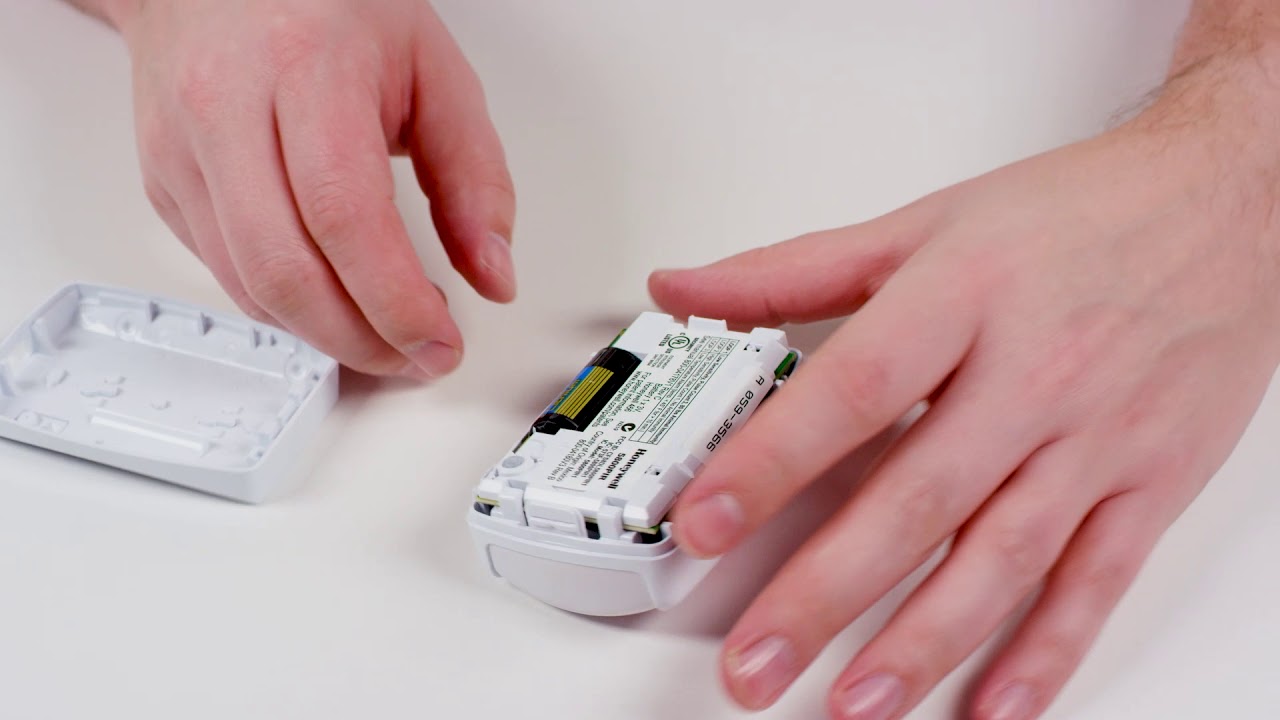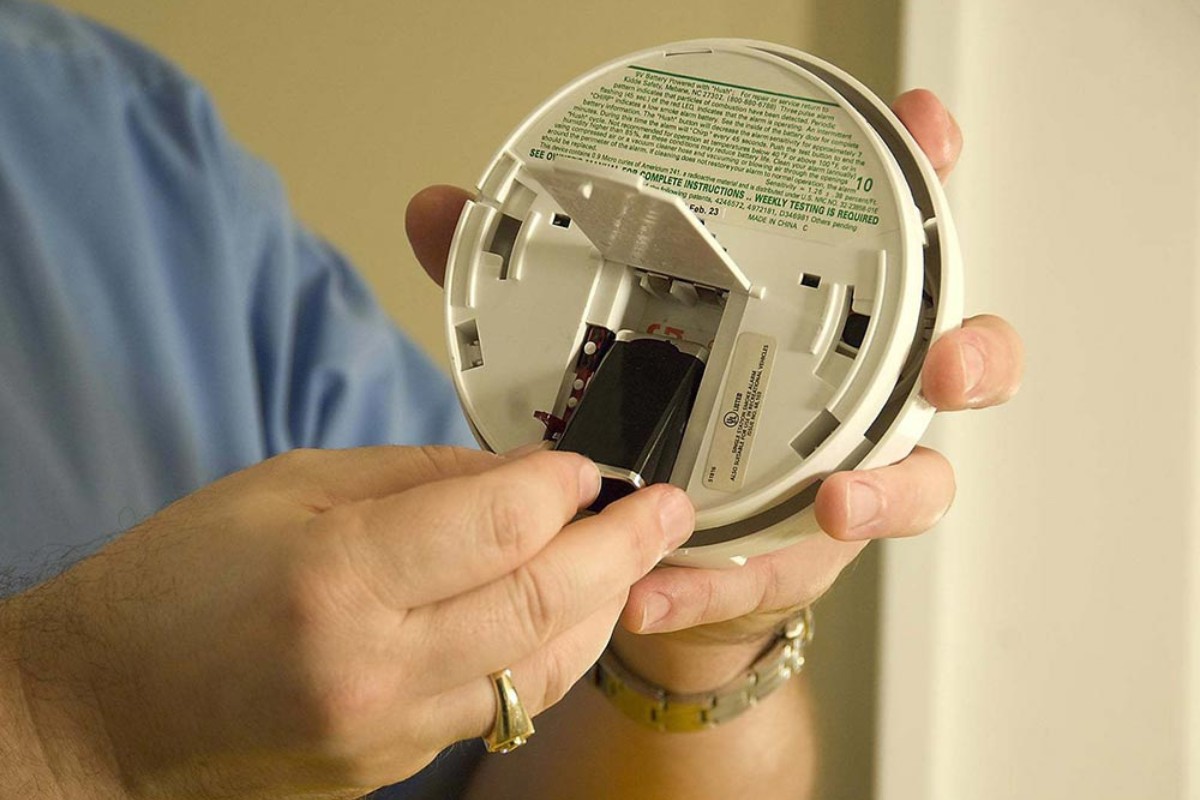Home>Home Security and Surveillance>How To Change The Battery On A Vivint Motion Detector
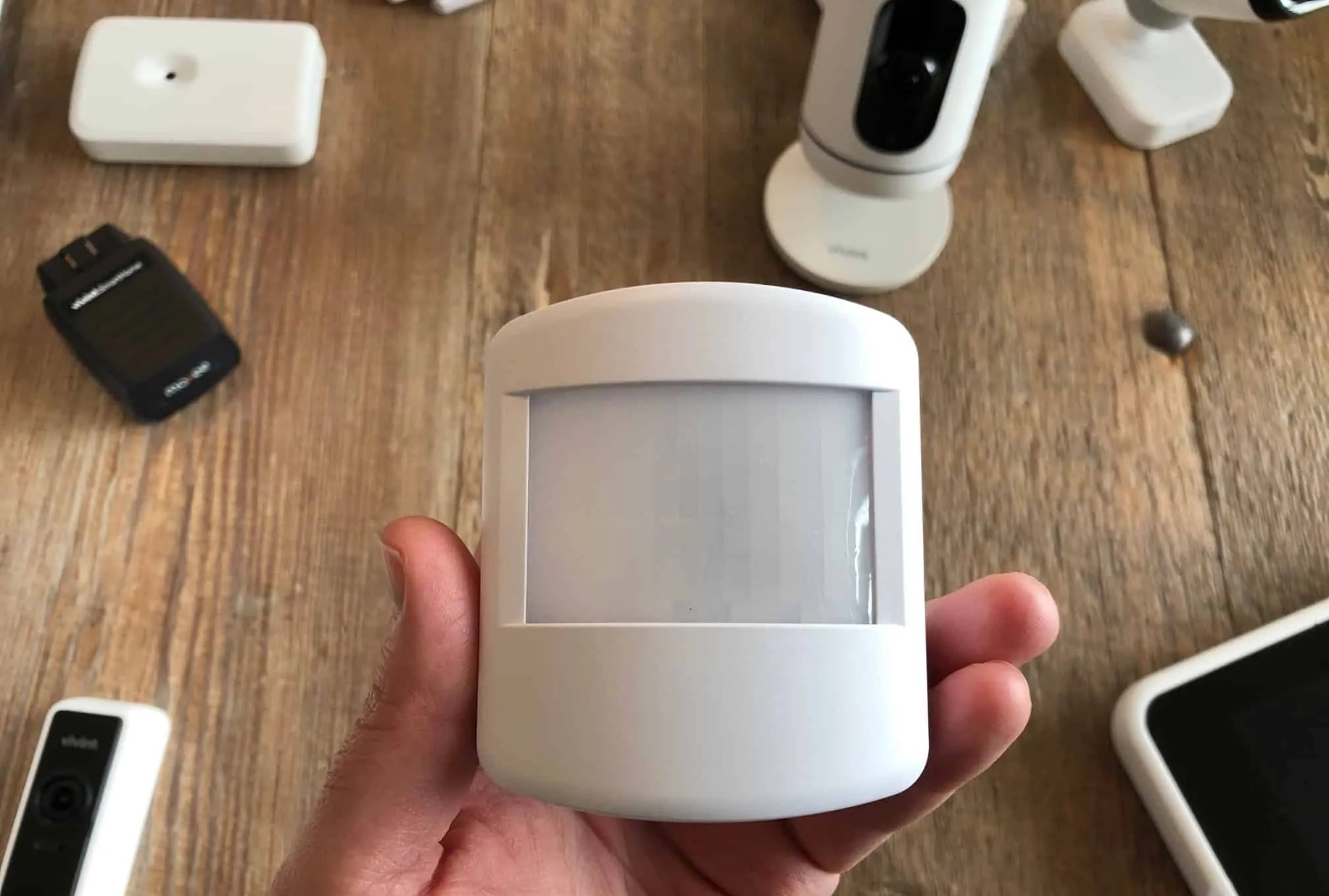

Home Security and Surveillance
How To Change The Battery On A Vivint Motion Detector
Modified: May 6, 2024
Learn how to change the battery on a Vivint motion detector for your home security and surveillance system. Keep your system running smoothly and secure.
(Many of the links in this article redirect to a specific reviewed product. Your purchase of these products through affiliate links helps to generate commission for Storables.com, at no extra cost. Learn more)
Introduction
Welcome to this comprehensive guide on how to change the battery on a Vivint motion detector. The motion detector is a critical component of any home security system, as it helps identify and alert you to potential intruders or suspicious activity. However, like any electronic device, the motion detector relies on a power source, which in this case, is a battery. Over time, the battery will eventually need to be replaced to ensure the motion detector continues to function effectively.
In this article, we will walk you through the step-by-step process of changing the battery on your Vivint motion detector. We will cover all the necessary tools and materials you will need, as well as provide detailed instructions to help you complete the task without any hassle.
By following these instructions, you can save time and money by replacing the battery yourself, rather than relying on professional help. So, let’s get started on keeping your home security system in optimal condition!
Key Takeaways:
- Don’t forget to disable your alarm system before changing the battery on your Vivint motion detector to avoid any false alarms or disturbances during the process.
- Regularly replacing the battery on your Vivint motion detector ensures optimal performance and reliable security for your home. Always test the motion detector after battery replacement to ensure it’s functioning correctly.
Step 1: Gather necessary tools and materials
Before you begin the process of changing the battery on your Vivint motion detector, it is essential to gather all the necessary tools and materials. By having everything on hand, you can complete the task smoothly without any interruptions.
Here’s a list of the tools and materials you will need:
- Replacement battery: Check the specifications of your Vivint motion detector to determine the correct type and size of the battery required.
- Small screwdriver or coin: Depending on the design of your motion detector, you may need a small screwdriver or a coin to access the battery compartment.
- Clean cloth: It’s a good idea to have a clean cloth or a tissue handy to wipe away any dust or debris that may have accumulated inside the battery compartment.
Once you have gathered these tools and materials, you are ready to proceed to the next step of disabling the alarm system.
Step 2: Disable the alarm system
Before you start working on changing the battery, it’s crucial to disable the alarm system to prevent any false alarms or disturbances during the process.
To disable the alarm system, follow these steps:
- Locate the control panel of your Vivint security system. It is usually placed near the main entrance or in a centralized area of your home.
- Enter your security code on the control panel’s keypad. This code is typically a four-digit number that you use to arm and disarm your security system.
- Find the “Disarm” button on the keypad and press it. This will deactivate the alarm system temporarily, giving you the freedom to work on the motion detector without triggering any alarms.
- Once the alarm system is disabled, you can proceed to the next step of locating the battery compartment on the motion detector.
By disabling the alarm system, you ensure a safe and uninterrupted battery replacement process. Remember to rearm the system after you have completed the battery replacement to ensure your home is protected.
Step 3: Locate the battery compartment on the motion detector
Now that the alarm system is disabled, it’s time to locate the battery compartment on your Vivint motion detector. The battery compartment is typically located on the back or bottom of the device, but the exact placement may vary depending on the model.
To locate the battery compartment, follow these steps:
- Take a close look at your motion detector and identify any seams or panels on the device.
- Using your fingers or a small screwdriver, gently pry open the panels or slide off any covers that may be concealing the battery compartment.
- Inspect the back or bottom of the motion detector for a small compartment that contains the battery. It is usually marked with a symbol or label indicating the battery location.
Once you have located the battery compartment, you are ready to proceed to the next step of opening it to access the old battery.
Note: If you are having trouble locating the battery compartment or require specific instructions for your model, refer to the user manual provided by Vivint or contact their customer support for assistance.
Step 4: Open the battery compartment
Now that you have located the battery compartment on your Vivint motion detector, it’s time to open it up to access the old battery. Opening the battery compartment may require a small screwdriver or a simple twist-off mechanism, depending on the design of your motion detector.
To open the battery compartment, follow these steps:
- If your motion detector has a screw securing the battery compartment, use a small screwdriver to unscrew it in a counterclockwise direction. Set the screw aside in a safe place, as you will need it later.
- If your motion detector has a twist-off mechanism, hold the device firmly in one hand and twist the battery compartment cover in a counterclockwise direction. Keep twisting until the compartment cover pops open.
- Once the battery compartment is open, you may notice a small tab or latch holding the battery in place. Gently lift or slide this tab to release the old battery.
Now that you have successfully opened the battery compartment, you can proceed to the next step of removing the old battery from your Vivint motion detector.
Note: Remember to handle the motion detector and battery compartment with care to avoid any damage or accidental triggering of the device.
When changing the battery on a Vivint motion detector, make sure to turn off the system before opening the device. Use a small screwdriver to open the battery compartment and replace the old battery with a new one, making sure to match the positive and negative ends correctly. Close the compartment and turn the system back on to ensure the new battery is working properly.
Read more: How To Change Vivint Doorbell Battery
Step 5: Remove the old battery
With the battery compartment open, it’s time to remove the old battery from your Vivint motion detector. Removing the old battery is a simple process, but it’s important to do it correctly to avoid any damage to the device.
To remove the old battery, follow these steps:
- Identify the position of the old battery within the battery compartment.
- Gently lift or tilt the motion detector to allow the old battery to slide out from its position.
- Using your fingers or a non-metallic tool, carefully grasp the edges of the old battery and pull it out of the compartment.
Make sure to handle the old battery with care and dispose of it properly, following your local regulations for battery disposal. Old batteries may contain hazardous materials, so it’s important to handle them responsibly.
Once you have successfully removed the old battery, you can move on to the next step of inserting the new battery into your Vivint motion detector.
Step 6: Insert the new battery
Now that you have removed the old battery from your Vivint motion detector, it’s time to insert the new battery. Inserting the new battery is a straightforward process, but it’s important to ensure proper alignment and placement to ensure optimal performance of your motion detector.
To insert the new battery, follow these steps:
- Take the new battery and inspect it to ensure it is the correct type and size specified for your Vivint motion detector.
- Position the new battery in the same orientation as the old battery. The positive (+) and negative (-) terminals of the battery should align with the markings inside the battery compartment.
- Gently push the new battery into the compartment, ensuring it fits snugly in place. You might hear a slight click or feel resistance when the battery is properly seated.
It’s important to note that some motion detectors have multiple batteries, so ensure that you insert the new batteries correctly and in the specified locations if you have a multi-battery setup.
Once the new battery is securely inserted, you can proceed to the next step of closing the battery compartment.
Remember, always use fresh, high-quality batteries to ensure the best performance and longevity of your Vivint motion detector.
Step 7: Close the battery compartment
Now that you have successfully inserted the new battery into your Vivint motion detector, it’s time to close the battery compartment. Closing the battery compartment ensures that the battery remains securely in place and protects it from dust or damage.
To close the battery compartment, follow these steps:
- If your motion detector has a screw securing the battery compartment, take the screw that you set aside earlier and insert it into the designated hole. Use a small screwdriver to tighten the screw in a clockwise direction, ensuring it is snug but not overly tight.
- If your motion detector has a twist-off mechanism, hold the device firmly in one hand and twist the battery compartment cover in a clockwise direction. Keep twisting until the compartment cover is securely closed.
Once the battery compartment is closed, give it a gentle press or tap to ensure it is properly sealed. This will prevent any accidental opening of the compartment during the normal operation of your motion detector.
With the battery compartment closed, you are almost done! The final step is to test your motion detector to ensure it is properly functioning with the new battery.
Step 8: Test the motion detector
After replacing the battery and closing the battery compartment on your Vivint motion detector, it’s crucial to test the device to ensure everything is functioning correctly. Testing the motion detector will help you verify that the new battery is working and that the device is detecting motion as intended.
To test the motion detector, follow these steps:
- Make sure the alarm system is still disabled, as you don’t want to trigger any false alarms during the testing process.
- Stand in front of the motion detector within its detection range. Typically, it is recommended to stand at least 6-8 feet away from the device to ensure accurate detection.
- Move in front of the motion detector or wave your hand to simulate motion. Observe if the motion detector activates and sends a signal to the control panel or triggers any connected devices.
- If the motion detector successfully detects your movement and triggers the appropriate response, the testing is successful. This indicates that the battery replacement was a success and the motion detector is functioning properly.
If, however, the motion detector fails to detect movement or does not trigger the intended response, there may be an issue with the battery installation or the device itself. In such cases, you may need to repeat the battery replacement process or contact Vivint customer support for further assistance.
Remember to rearm your alarm system after completing the testing to ensure your home security is reinstated.
Congratulations! You have successfully changed the battery on your Vivint motion detector and tested its functionality. By regularly replacing the battery as needed, you can ensure your motion detector remains in optimal condition and provides reliable security for your home.
Read more: How To Remove A Vivint Motion Detector
Conclusion
Changing the battery on your Vivint motion detector is a simple and essential maintenance task that ensures the continuous functionality of your home security system. By following the step-by-step guide outlined in this article, you have learned how to replace the battery and test the motion detector to ensure it is working as intended.
Remember, proper maintenance and regular battery replacements are crucial to ensure the optimal performance of your motion detector. It is recommended to check the battery status periodically and replace it as soon as you notice a decrease in performance or receive low battery warnings from your security system.
Gathering the necessary tools and materials, disabling the alarm system, locating the battery compartment, opening it, removing the old battery, inserting the new battery correctly, closing the battery compartment, and testing the motion detector are the key steps to successfully replace the battery.
By following these steps, you can save time and money by avoiding the need for professional assistance and ensure that your Vivint motion detector continues to provide reliable security for your home.
So don’t ignore the importance of maintaining your home security system. Take the time to change the battery on your motion detector and enjoy the peace of mind knowing that your home is protected.
Remember, if you encounter any issues or require additional guidance, always refer to the user manual provided by Vivint or reach out to their customer support for assistance.
Keeping your home secure and efficient is easier than ever with the latest advancements in smart home technology. If you enjoyed learning how to update your Vivint motion detector, you’ll definitely want to check out our comprehensive guide on the most innovative home automation systems available soon. From controlling lights and temperatures to enhancing security measures, find out how these systems can transform your living space into a smarter home.
Frequently Asked Questions about How To Change The Battery On A Vivint Motion Detector
Was this page helpful?
At Storables.com, we guarantee accurate and reliable information. Our content, validated by Expert Board Contributors, is crafted following stringent Editorial Policies. We're committed to providing you with well-researched, expert-backed insights for all your informational needs.
